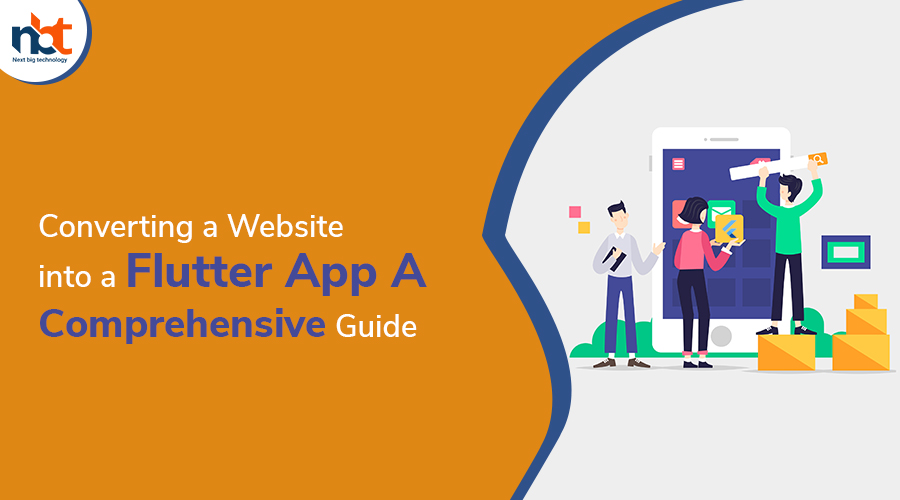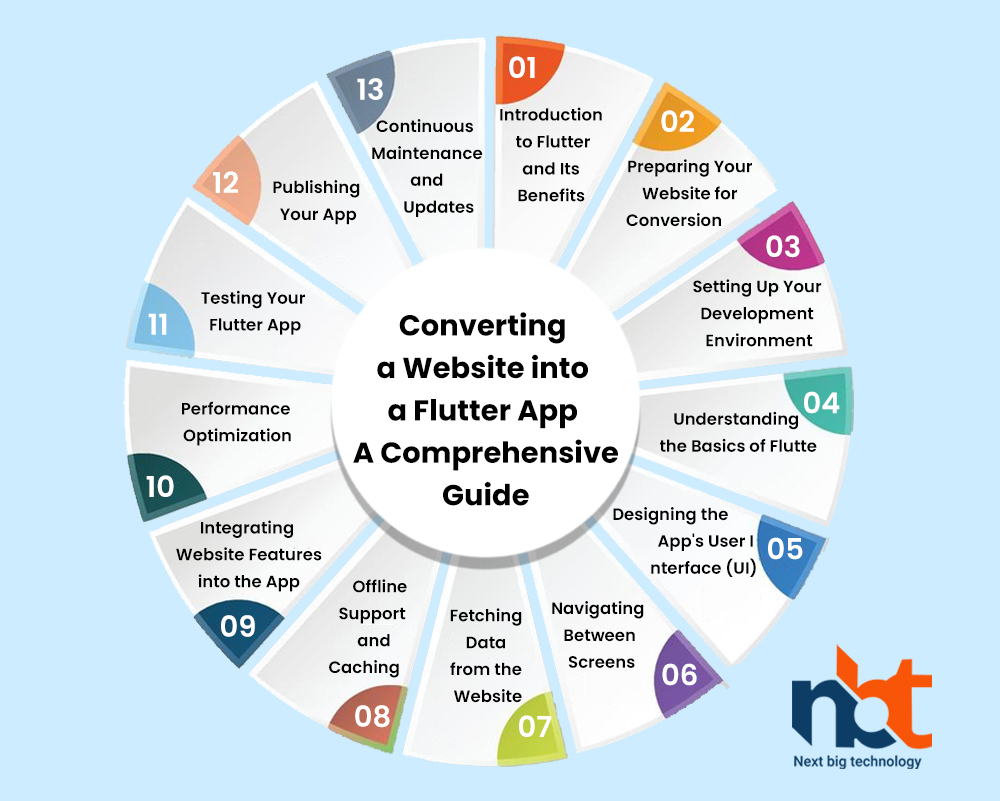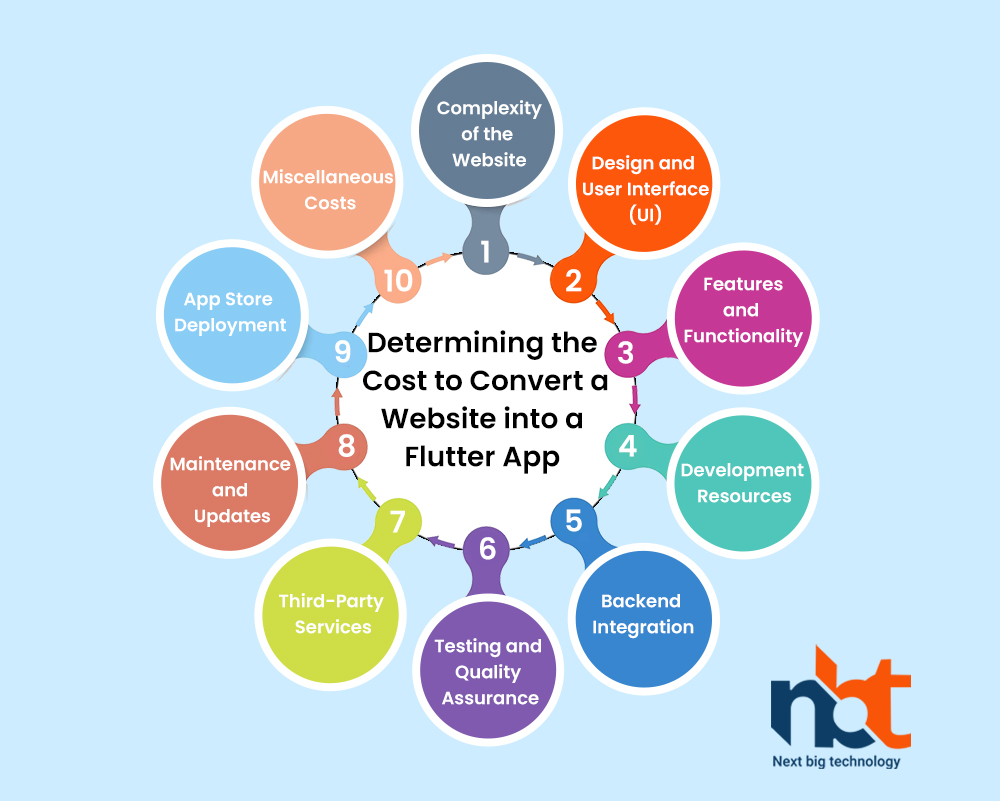In today’s digital landscape, having a mobile application for your website can significantly enhance user experience and engagement. Flutter, a popular UI toolkit by Google, has gained immense traction due to its cross-platform capabilities and rich set of widgets. This guide will walk you through the process of converting a website into a Flutter app, step by step. Whether you’re a seasoned developer or new to app development, this comprehensive guide will assist you in bringing your website to the mobile world.
Table of Contents
Table of Contents:
- Introduction to Flutter and Its Benefits
- Overview of Flutter
- Advantages of using Flutter for app development
- Preparing Your Website for Conversion
- Analyzing the website’s structure
- Identifying core features for the app
- Optimizing the website for mobile responsiveness
- Setting Up Your Development Environment
- Installing Flutter and Dart
- Configuring IDEs (Integrated Development Environments) for Flutter
- Understanding the Basics of Flutter
- Widgets and their role in Flutter
- Exploring the widget tree
- Stateful vs. stateless widgets
- Designing the App’s User Interface (UI)
- Translating website design to mobile screens
- Utilizing Flutter’s pre-designed widgets
- Implementing responsive layouts for various screen sizes
- Navigating Between Screens
- Creating navigation routes
- Implementing navigation drawers and tabs
- Ensuring smooth transitions between screens
- Fetching Data from the Website
- Using APIs to retrieve website data
- Parsing data using asynchronous programming
- Displaying dynamic content in the app
- Offline Support and Caching
- Implementing caching mechanisms
- Allowing users to access content offline
- Handling data synchronization when online
- Integrating Website Features into the App
- Incorporating forms and user inputs
- Embedding multimedia elements such as images and videos
- Enabling user interactions like comments and likes
- Performance Optimization
- Profiling and analyzing app performance
- Implementing lazy loading for images and data
- Minimizing network requests for faster loading times
- Testing Your Flutter App
- Writing unit and integration tests
- Utilizing Flutter’s testing framework
- Conducting real-device testing and debugging
- Publishing Your App
- Preparing the app for release
- Generating APK and IPA files
- Uploading the app to Google Play Store and Apple App Store
- Continuous Maintenance and Updates
- Monitoring app analytics and user feedback
- Iteratively improving the app based on usage patterns
- Ensuring compatibility with new Flutter releases
Determining the Cost to Convert a Website into a Flutter App
Converting a website into a Flutter app involves several factors that contribute to the overall cost. The cost estimation can vary based on the complexity of the website, desired app features, design intricacies, and development resources. Here, we’ll break down the main cost components to help you understand and plan your budget effectively.
1. Complexity of the Website:
- The structure and complexity of the website will impact the effort required to convert it into an app. Websites with intricate features and functionalities will likely require more development time, leading to higher costs.
2. Design and User Interface (UI):
- Designing a user-friendly and visually appealing app requires design expertise. The cost can increase if you need to adapt the website’s design to fit mobile screens while maintaining a consistent brand identity.
3. Features and Functionality:
- The features you want to incorporate into the app play a significant role in cost estimation. Basic features like content display might be less expensive, while integrating interactive features, user accounts, push notifications, and real-time updates will add to the cost.
4. Development Resources:
- The development team’s size, location, and experience will impact costs. Hiring experienced Flutter developers might require a higher budget, but it can lead to a more polished and efficient app.
5. Backend Integration:
- If your website relies on backend services, APIs, or databases, integrating them into the app will contribute to the cost. Backend development and API integration efforts can vary based on complexity.
6. Testing and Quality Assurance:
- Rigorous testing is crucial to ensure a bug-free and reliable app. Allocating resources for testing on different devices, platforms, and scenarios is essential and may contribute to the overall cost.
7. Third-Party Services:
- Depending on your app’s requirements, you might need to integrate third-party services for analytics, payment gateways, social media, or maps. Some of these services come with associated costs.
8. Maintenance and Updates:
- After the initial launch, ongoing maintenance, bug fixes, updates, and improvements are necessary to keep the app functional and up to date. Budgeting for post-launch maintenance is important.
9. App Store Deployment:
- There are fees associated with publishing apps on app stores, such as Google Play Store and Apple App Store. These fees cover app submission and annual developer account costs.
10. Miscellaneous Costs:
- Unexpected challenges, revisions, and additional feature requests can arise during the development process. Allocating a buffer for unforeseen costs is advisable.
The cost to convert a website into a Flutter app varies greatly based on project-specific factors. While it’s challenging to provide an exact figure without knowing the project’s details, consulting with experienced app development companies or freelancers can help you receive tailored quotes. Remember that investing in a well-developed app can yield significant returns in terms of user engagement, brand visibility, and business growth. It’s crucial to carefully plan your budget and prioritize features that align with your goals and target audience.
Conclusion:
Converting a website into a Flutter app opens up new avenues for engaging users on mobile devices. With the comprehensive insights provided in this guide, you now have the knowledge to seamlessly transform your website into a feature-rich Flutter application. Remember that the journey doesn’t end with the app’s release – continuous improvement and adaptation are key to keeping your app relevant and user-friendly in the ever-evolving mobile landscape. Happy app development!












